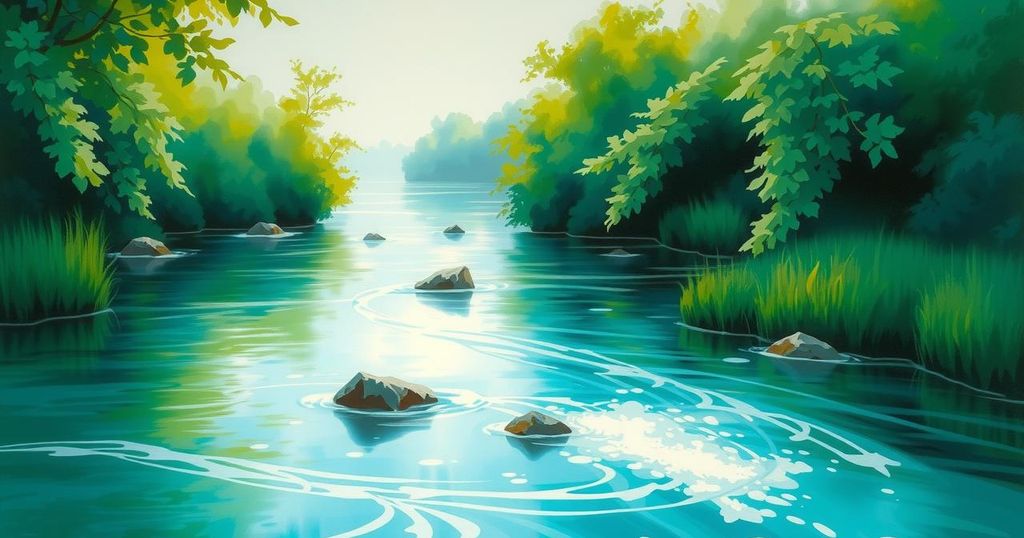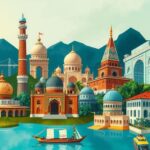Politics
AFRICA, ALLEPPEY, AMAZON, AMAZON RAINFOREST, AMAZON RIVER, ARABIAN SEA, ASHTAMUDI LAKE, ASIA, BOWL, BRAZIL, CAMBODIA, CHINA, COLOMBIA, CONSERVATION, CUBA, CULTURAL HERITAGE, DATA ANALYSIS, EVERGLADES, FAMOUS BACKWATER RIVERS, FLORIDA, INDIA, JAPAN, KERALA, KERALA BACKWATERS, KUMARAKOM, KUTTANAD, MALABAR, MALABAR COAST, MALI, ME, MEKONG, MEKONG DELTA, MEXICO, MISSISSIPPI, NIGER, NORTH AMERICA, OF GRASS, PERU, SOUTH AMERICA, TONLE SAP, TONLE SAP LAKE, TOURISM, TRAVEL, UNITED STATES, USA, VEMBANAD LAKE, VIETNAM
Sophia Klein
Exploring Seven Notable Backwater Rivers Across the Globe
This article highlights seven notable backwater rivers, detailing their unique ecosystems and attractions, including Kerala’s backwaters in India, the Mekong Delta in Vietnam, Tonle Sap Lake in Cambodia, and the Amazon River in Brazil. These locations showcase rich biodiversity and cultural experiences for nature and adventure enthusiasts.
Backwater rivers provide breathtaking landscapes, rich biodiversity, and unique cultural experiences. From the serene backwaters of India’s Kerala, famed for its houseboats, to Brazil’s Amazon River, which is abundant with wildlife, each location boasts its special attributes. Significant destinations include Vietnam’s Mekong Delta, known for its floating markets, and the Mississippi Delta, showcasing lush wetlands. Other vital ecosystems include Cambodia’s Tonle Sap Lake, Mali’s Niger Inland Delta, and Florida’s Everglades, underscoring the diversity and splendor that attract nature enthusiasts and adventure seekers alike.
Kerala Backwaters (India)
This remarkable network of lagoons, lakes, canals, and rivers runs parallel to the Arabian Sea along Kerala’s Malabar Coast. It features a diverse ecosystem resulting from the confluence of freshwater and saline seawater. Key attractions include Alleppey, Kumarakom, Ashtamudi Lake, Vembanad Lake, and Kuttanad, inviting visitors to explore its natural beauty.
Mekong Delta (Vietnam)
Located in southern Vietnam, the Mekong Delta boasts a complex network of rivers, swamps, and islands at the river’s mouth into the South China Sea. Known as the “rice bowl of Vietnam,” it contributes to almost 50% of the country’s rice yield. Visitors can enjoy vibrant floating markets, stilt houses, and verdant landscapes, alongside a rich array of wildlife.
Tonle Sap Lake (Cambodia)
As Southeast Asia’s largest freshwater lake, Tonle Sap Lake plays a pivotal role in Cambodia’s fishing industry and agriculture. Found in central Cambodia, it features a remarkable ecosystem that expands significantly during the monsoon, almost multiplying in size sixfold. This unique feature enhances both its biodiversity and agricultural productivity.
The Everglades (USA)
Situated in southern Florida, the Everglades is a sprawling subtropical wetland spanning 1.5 million acres. Often referred to as the “River of Grass,” it is ecologically vital, supporting endangered species and providing essential water resources. Designated as a UNESCO World Heritage Site, its unique ecosystems are crucial to global biodiversity.
The Amazon River (Brazil)
The Amazon is the world’s second-longest river, flowing over 7,000 kilometers across Brazil, Peru, Colombia, and beyond. It is the largest river by water volume, dwarfing all others globally. Referred to as the “Lifeline of the Rainforest,” the Amazon sustains immense biodiversity within the vast rainforest that surrounds it, making it a key ecological asset.
The Mississippi River Delta (USA)
Flowing into the Gulf of Mexico in Louisiana, the Mississippi River Delta forms a vast, dynamic wetland ecosystem. Covering over 3 million acres, it includes diverse environments such as marshes, swamps, barrier islands, and estuaries, providing critical habitats for numerous species and acting as a natural defense against coastal erosion.
The Niger River Inland Delta (Mali)
This expansive floodplain ecosystem, located in central Mali, is formed by the Niger River as it slows down between Timbuktu and Mopti. As one of Africa’s largest wetlands, the Niger Inland Delta covers up to 20,000 square kilometers during the rainy season, housing diverse wildlife and supporting local agriculture and fishing communities.
The exploration of these seven famous backwater rivers reveals diverse ecosystems and rich cultural experiences that enhance the natural beauty of the regions they traverse. Each river, from India’s tranquil Kerala Backwaters to Brazil’s mighty Amazon, offers distinctive attractions, contributing significantly to local economies and environmental diversity. The importance of preserving these pristine areas cannot be overstated, as they sustain unique wildlife and provide vital resources to the communities they serve.
Original Source: zeenews.india.com








Post Comment